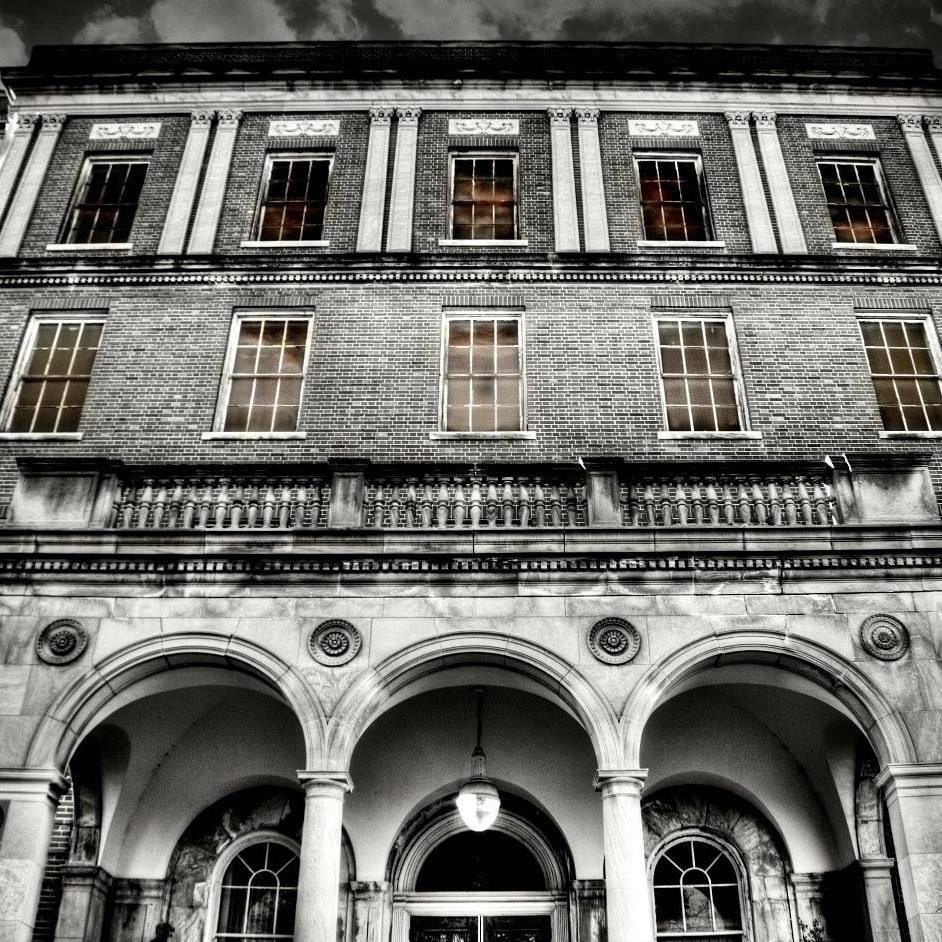Columbia.edu news service – May 2, 2006
Exploring the world of abandoned insane asylums
By Gregory Brown
Jonathan Brothers once rushed up a set of stairs in an abandoned insane asylum only to burst into a room full of Reserve Officer Training Corps cadets practicing close quarters combat fighting with raised M-16 rifles.
Such are the perils of a devout insane asylum explorer.
For nearly three months, Brothers has been at work on his pet project. He has scoured the Internet and historical databases. He has crept into closed-off sanatoriums. He hopes eventually to complete a database of the major abandoned insane asylums in the United States.
Abandoned insane asylums have attracted a following of photographers and explorers. Of particular interest are facilities built following the principles of Thomas Kirkbride, who in the 1840s pioneered the idea of self-contained sanitarium communities. He was responsible for the spires and sprawling stone compounds of facilities like Danvers State Hospital, dubbed the “castle on the hill,” in Danvers, Mass.
“For some people, it’s the deep and sometimes dark past surrounding these places,” said Brothers, who maintains his database at asylumprojects.org. “Others hope to find something there, something of the past that they can connect to when the institution was open and running. Other people may have spent time there and want to go back.”
Today, many of the stone mansions built to house the mentally ill or isolate those with diseases like tuberculosis are vacant and decaying. Riddled by forgotten memories, they have become home to explorers.
Some simply explore, thrilled by eluding law enforcement and shunning “no trespassing” warnings in order to discover a hidden nook or cranny. Others are photographers, hoping to catch glimpses of past pain on film. While others simply chronicle the facilities, compiling in-depth directories of the hundreds of abandoned asylums across the United States.
While explorers often mention a tangible sadness, a feeling of longing and loss that resonates from abandoned asylums, photographers delight in the little slips of life that still remain: a curling, fading list of patients on a floor; a twisted bed with the sheets still wrapped over the mattress; a patient recreation room with old jigsaw puzzles or rusted steel chairs.
Asylums began to fall vacant during the 1970s as new drugs helped the mentally ill function in society and as court decisions held that people could not be institutionalized against their will. Many patients moved to less restrictive treatment facilities.
Shaun O’Boyle has a passion for architecture and industrial photography. Among his favorite subjects are abandoned factories and mills as well as the Buffalo Psychiatric Center, an abandoned asylum in upstate New York.
“What makes me most interested in visiting these places is finding things left behind–equipment, furniture, personal items–these start telling a story about who the people were who lived here,” O’Boyle said. “What looks like an old wreck from a distance can contain some beautiful and intimate portraits when looked at carefully.”
While O’Boyle considers himself more of a photographer than an explorer, he has still had to overcome the challenges of getting into sites. Trespassing is prohibited on almost all abandoned asylum grounds, which are often surrounded by functioning hospitals or colleges that have security patrols.
“It’s about half the job getting access to these sites,” O’Boyle said. “For many urban explorers, the reason to be exploring is for the rush of being places you are not supposed to be, but when your main objective is to take photographs it’s much easier to be able to move around freely and do your work if you are there with the consent of the owner.”
Many explorers are drawn to the darker side of asylums. Waverly Hills Sanatorium was built outside of Louisville, Ky., to treat tuberculosis patients. It was closed in 1961 and for four decades has lured explorers. The facility was recently featured on the Sci-Fi channel’s “Ghost Hunters” show, and macabre tales about the facility’s death tunnels–underground passages used to transport dead bodies out of the complex–have drawn considerable interest.
Erin Derry, a Web designer who lives with her husband in Crestview, Fla., recently finished a project called Tales of Eloise. Her site, thetalesofeloise.com, stemmed from her fascination with Eloise Insane Asylum, an abandoned asylum in Detroit that was once one of the largest hospitals in the country.
At its peak Eloise existed as its own self-sufficient community, growing its own food, maintaining its own post office and handling all of its own laundry and other services. The facility was shut in the late 1970s, and most of its records were destroyed, leaving a level of mystery and intrigue unmatched by most other abandoned asylums.
Derry said that she often heard ghost stories about the mysterious network of tunnels that exist under Eloise.
“Whether people know it or not, these asylums have influenced the American culture,” Brothers said. “When I go to these places I always think back and imagine all the emotions that went on there. I think of what the people went though as they were patients or workers at that hospital.”
E-mail: grb2104@columbia.edu
